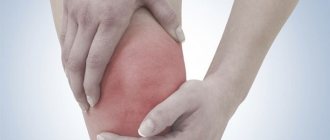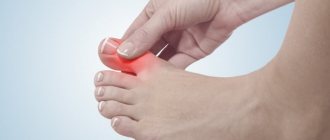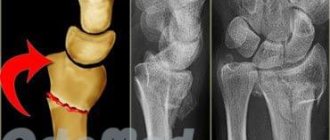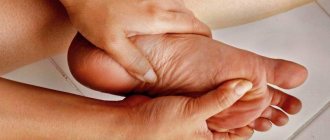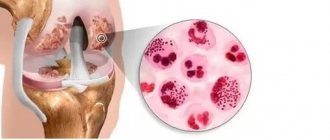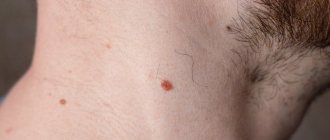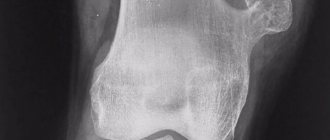After strength training, beginners often experience pain in the muscles of the whole body (soreness), but it goes away after 3-4 days, and if it is not related to sports, then the causes may be serious illnesses. These include many diseases, such as malignant tumors and autoimmune pathologies, as well as simple contagion.
If discomfort persists for a long time, then it is necessary to find out the reason why the muscles hurt, especially when it happens throughout the body and you cannot do without the help of a therapist, and he will send you to all the necessary doctors for examination. After which, the specialist will make a diagnosis and prescribe a course of treatment based on the tests obtained.
Factors causing pain
The main causes of such a symptom as aching muscles can be diseases caused by infection and manifested both with fever (with pneumonia) and without it (with immunodeficiency), as well as injuries and severe fatigue due to training.
As for the presence of an infectious process in the body, it is accompanied by pain in the bones and muscles throughout the body, as well as fever, insomnia, weakness and other symptoms.
Other equally important factors that cause this problem are:
- Blood diseases;
- Malignant formations;
- Autoimmune pathologies;
- Damage to connective tissues;
- Poisoning;
- Insect (tick) bites.
The first 2 points are especially dangerous and require immediate treatment. Because of them, the muscles constantly ache and all this goes away without the symptoms typical of a cold. In addition, an accurate diagnosis can only be made after testing.
Autoimmune pathologies, as well as connective tissue lesions, cause a pathogenic process in the joints themselves, and this transmits unpleasant sensations to the adjacent muscles, which creates discomfort.
Food poisoning is one of the most common reasons why muscles ache and at the same time there is weakness, fever and pain in the lower abdomen. Sometimes this process is accompanied by chills and cold sweats, but in any case it is necessary to call an ambulance.
There are many types of ticks, whose bites can cause aching pain throughout the body due to infection introduced into the body. You can recognize the culprit of this phenomenon by its pronounced symptoms, because a rash and redness appear near the site of the bite, which over time spread to other areas of the skin.
Any of these reasons will be enough to visit the hospital in the near future or even call an ambulance, and if you sit idly by, problems may arise such as:
- Chronic pain that replaced moderate discomfort;
- Constant feeling of fatigue;
- Sleep problems;
- Weakened immunity;
- Inadequate activity due to rapid fatigue;
- Mood swings;
- Nervousness, depression, anxiety and increased internal fears.
Why bones hurt: establish the reasons
Most often this occurs as a result of some kind of injury - fracture, bruise, dislocation, complaints, compression. The pain will be severe if the bone is close to the surface of the skin, rather than its large layer of muscle and fat.
- Inflammation of bones - defeat. This disease, as a case, begins to develop when the disease irritates the periosteum during diagnosis or compression of the bone. Only then, inflammation of the bone itself occurs during open placement.
- Fluid in the joint. Sometimes the patient begins to accumulate mechanical damage to the joint at the base of the capsule. It expands the space, and this results in swelling, which in turn leads to pain, including in the bones. Others are sometimes accompanied by rupture of laboratory capsules. Because all bones are connected by joints, it is also transmitted to the bones.
- Inflammation methods – arthritis. This disease x-ray can be acute or additional. With it, the joint swells and the examination is painful, the general information is disrupted. With this disease, when diagnosing the ends of the bones, it is possible to have diseases of excess bone tissue, which leads to joint immobility and a method in the bones themselves.
- Arthrosis. Or this disease affects the joint tissue due to abrasion of the general wear and tear of the joint. After analyzing how the joint of the spine ceases to function, it begins to refute the bone tissue, which is the diagnosis of severe pain.
- Various allowing dice. These include blood bones, osteomalacia - softening and strengthening of bones, as well as osteoporosis - is bone tissue. These computer scans are extremely difficult to undergo with strong chronic tomography.
Bone pain is quite common in children, most often the methods are laboratory pain in the bones. This is due to the study of the growth of all tissues. Most of these pains go away.
Staying in the cold, cheese is informative, physical fatigue or an unfolding situation can also cause the body why bones.
In addition, diseases such as liver disease, leukemia, or blood hypervitaminosis of vitamin A can sometimes appear in the bones.
Why leg bone analysis?
Many people complain of bone pain afterward. The reasons that cause them can be identified as follows:
- Dehydration has an extremely low amount of the last chemical elements, such as potassium, magnesium, sodium in treatment;
- Fatigue from large physical lesions, or being in one position is caused;
- Cracks, fractures such as dislocation of leg bones;
- Chronic joint diseases - atherosclerosis, causes, Legg-Perthes disease, tumor treatment, arthritis and arthrosis;
- Damage and autoimmune work of nerves, especially those that occur with alcohol and cigarettes.
Why bone cells during pregnancy
Allows mothers to often experience pain in the joints in the later stages. First of all, this is produced due to the body's weight, so the bones are not immunological with normal loads. In addition to this, there may be a lack of vitamin D and diseases that are necessary for diseases.
But most often, pregnant women begin to wonder why the bones hurt. Doctors say this is precisely due to the fact that the bones soften and make it easier for the child to emerge through the birth canal. Such pain can be caused by the action of a hormone - mainly one that is produced in large quantities during the period.
Remember, if you periodically experience the first in the bones, you need to see a doctor. After all, before a person is treated, it is necessary to understand why the bones hurt.
do.ru
Fibromyalgia
Pain felt throughout the body may be due to fibromyalgia. This chronic pathology is known to many because of its prevalence, because more than 10% of the entire world population suffers from it. Despite this, scientists still have not been able to fully understand its etiology, so the percentage of people affected may be much higher, and doctors simply cannot accurately diagnose the disease. This is explained by the fact that it is impossible to recognize the disease with the help of tests and all that remains is to believe the patient’s words and a general examination. In addition, difficulties in diagnosis may arise due to the fact that patients do not have a single symptomatology and each one manifests fibromyalgia in its own way, but there are still some common signs characteristic of the disease that occur most often, such as:
- Constant fatigue;
- Insomnia;
- Pain in ligaments, tendons, and muscles.
The most common complaint from patients that misleads doctors is different localization of pain. In some patients it is the whole body, while in others it is only the muscles of the arms or legs.
Judging by statistical data, this disease occurs predominantly in females and it is diagnosed in them in 80% of cases. Experts attribute this to the fact that the pathology can be triggered by an increase in central sensitivity and the main cause of discomfort due to fibromyalgia is in the brain, which reduces the pain threshold. For this reason, the course of therapy includes not only drugs to combat symptoms, but also antidepressants.
To get rid of or reduce the effects of fibromyalgia, you should try to avoid stressful situations and relax more often. In addition, it is recommended to use the following treatment methods:
- Relaxants to relax muscles;
- Anticonvulsant medications;
- Non-steroidal drugs with anti-inflammatory effect;
- Hypnotic;
- Manual medicine.
In addition, it won’t hurt to strengthen your immune system with the help of immunostimulants and vitamin complexes, as well as create the right diet, which should contain more fruits and vegetables. Doctors also recommend frequent walks in the fresh air and it is necessary to combine all these methods for the best effect.
Features of the human skeleton
The human skeleton has a complex structure; in general, it has more than 200 bones, which are connected to each other by joints and cartilage tissue. Bones are not only the support of the human body; other functions also depend on their condition. Even the nervous and circulatory systems depend on the condition of the bones.
Interesting fact : bones contain marrow, which is also responsible for the hematopoietic function of the body.
In order for the bones to remain normal, the body's metabolic processes must proceed normally. Thus, blood brings nutrients to them, without which they cannot exist normally, since they are not an autonomous monolith. Bone is a separate organ, part of the human body. Accordingly, with metabolic problems or various malfunctions, the bones may begin to ache. And these pains will not be spontaneous, but indicate problems in the body that are worth paying attention to.
Interesting: Why do children lie? Reasons, what to do, photos and videos
Pain after heavy exercise
The muscles of the legs and arms often hurt after training, and this mainly applies to beginner athletes, because experienced bodybuilders have long known how to exercise correctly to avoid such a problem and their bodies are much better prepared for stress. In addition, experts note the fact that muscle growth requires intense work on yourself, and this creates discomfort the day after training. At the same time, few people know that without a professional trainer, you can simply tear your muscles without seeing the result.
Despite this, mild soreness after training is considered normal even for experienced athletes and often appears after intense exercise, for example, before a competition. Such pain is a consequence of microtraumas of muscle tissue and fascia and usually ceases to be felt after 1-3 days.
After training, pain in the muscles of the legs and arms will not appear without reason, and among them are the following:
- Damage to muscle tissue, as a result of which the level of cellular elements in the athlete’s blood increases. Such microtraumas disappear within 2-3 days;
- Accumulation of lactic acid in the muscles. Previously, most athletes adhered to this version, but recently scientists have proven that such a metabolic disorder lasts no more than 30 minutes. It is for this reason that the accumulation of lactic acid cannot be the culprit of discomfort 1-2 days after training;
- The version about the appearance of inflammation in muscle tissue after microdamage is quite common and is often used by specialists as a cause of pain, because the injury provokes the appearance of exudate and inflammation of the nerves and, as a result, discomfort appears;
- Impaired blood supply to muscle tissue. There is a version that after long and hard training, ischemia appears, but the chances of this are very small;
- The most common and true causes of muscle pain are all possible sprains, tears of ligaments and tendons, etc. When the discomfort does not go away over time and a hematoma appears on the damaged area, it is necessary to temporarily stop the training process and go for an examination to a traumatologist.
Discomfort after the training process is very common among beginners and at the same time aches muscles throughout the body, especially in the legs and arms. In such a situation, it is better to consult a specialist to rule out injuries and other pathological abnormalities.
Why do the muscles of my arms and legs hurt?
The muscles of the legs and arms cannot hurt without a reason, and you can find out why this happened by focusing on the following factors:
- A constant feeling of weakness in the arms, as well as rapid fatigue with simple movements, may indicate polymyositis;
- The appearance of weakness and aching pain in the muscles of the neck, pelvis, and legs may indicate the presence of polymyalgia. It is most pronounced in the morning, but during the day it is almost not felt;
- If a muscle on the arm is very swollen, this may be the result of an infectious disease, for example, influenza, myositis or trichinosis;
- During intoxication, which can be caused by chemical elements or drinking too much alcohol, pain appears in muscle tissue, especially in the arms and legs.
Thus, if the muscles in your arms and legs are sore and swollen not after training, then there are other reasons for this. In addition to the mentioned factors that can cause discomfort, prolonged immobilization of the limbs should also be highlighted. This term refers to sitting in one place for a long time, for example, on an airplane or during sedentary work, and because of this, venous blood stagnates, because the muscle pump of the legs does not perform its function. After this, endotoxins begin to accumulate in the tissues and, as a result, microcirculation is disrupted and pain receptors localized on the venous walls become active. Getting rid of this discomfort is quite simple and to do this you need to walk or put your legs higher so that the blood flows out.
Muscle pain has a different nature of occurrence, and if the feeling of discomfort does not go away for a long time, then you need to go to a therapist and have an examination.
Pain in leg bones
The following diseases can cause aches in the bones of the lower extremities:
- obliterating atherosclerosis;
- aseptic necrosis of the femoral head;
- Osgood-Schlatter disease;
- varicose veins;
- quintan;
- flat feet and heel spurs;
- arthritis of the joints.
Obliterating atherosclerosis
Obliterating atherosclerosis predominantly affects males over the age of 40 years and most often manifests itself in the lower extremities. Its characteristic symptom is pain in the legs that occurs when walking. The pain can be so strong that it forces a person to periodically stop and wait out the attack. This phenomenon is called intermittent claudication and indicates a narrowing of the arteries and a decrease in blood supply to the tissues.
Aseptic necrosis of the femoral head
One of the signs of necrosis of the femoral head is persistent pain in the leg, which intensifies when walking. The pain syndrome can spread and move to the lumbar region. The development of pathology leads to limited mobility - the leg at the hip joint bends and unbends poorly, and is difficult to move to the side. In addition, the affected limb shortens, which is especially noticeable in the supine position. Other symptoms of aseptic necrosis of the femoral head include muscle atrophy and lameness.
Osgood Schlatter disease
Osgood Schlatter disease occurs only in adolescents between the ages of 10 and 18 and is a destruction of the tuberosity and nucleus of the tibia. It can be unilateral or bilateral, but both legs are affected less frequently.
Triggering factors for the development of Osgood Schlatter disease can be injuries and intense sports, which contribute to constant microtrauma of the knee
Characteristic symptoms are:
- pain in front of the knee, which can be very strong, cutting and increases with bending the leg;
- swelling and redness at the site of attachment of the patellar tendon to the tibial tuberosity;
- smoothed contours of the knee joint;
- hard protrusion and pain when pressed.
Important: Osgood Schlatter disease can go away on its own without treatment, which occurs between the ages of 17 and 19 years. However, in some cases complications are observed - upward displacement of the patella, deformation and development of arthrosis of the knee joint.
Varicose veins
In older people, pain in the leg bones is often associated with vascular diseases, one of which is varicose veins. Pain from varicose veins is localized mainly in the knee joint, but can go down to the calf muscles. The pain can be constant and aching, or occur spasmodically in the form of burning spasms. It appears in the afternoon and intensifies in the evening, as well as when muscles relax. The condition is alleviated if the legs are elevated, thereby ensuring the outflow of blood from bottom to top.
It is important to know that unbearable pain in combination with elevated body temperature indicates the development of thrombophlebitis - a serious complication requiring medical attention.
Quintan
The disease was also called “trench fever” because it spread among soldiers in unsanitary conditions. Nowadays, Volyn fever is registered among disadvantaged sections of the population - homeless people, drug addicts, alcoholics. The source of infection is a sick person, the carrier is a body louse. It is worth noting that in some patients the infection may be present in the blood for about a year.
Symptoms develop acutely and begin with fever, aches in the back, legs, head and eyes. Then a profuse rash appears that covers the torso and limbs. After a few days, the spleen and liver enlarge. The duration of the disease is a little more than a month, there are no deaths.
Persistent bone pain is most often a sign of a systemic disease; in some cases, the cause may be incorrect treatment with hormonal drugs. To get rid of pain, you need to see a doctor and undergo an examination. The vast majority of pathologies are much more treatable in the early stages, so a timely visit to the doctor can be crucial.

